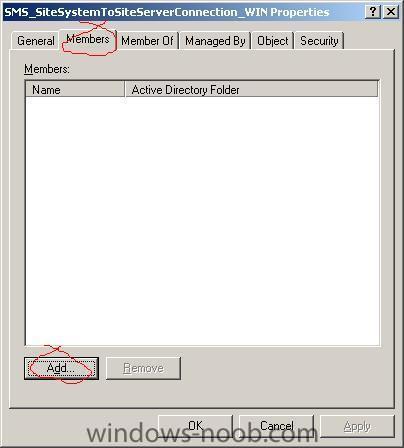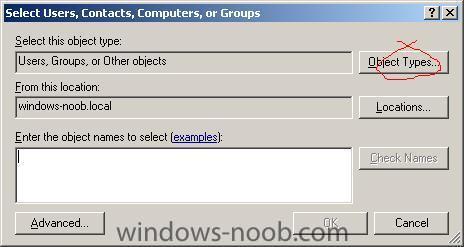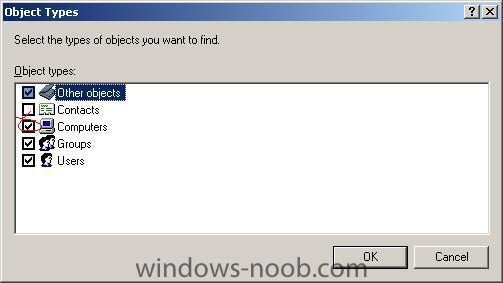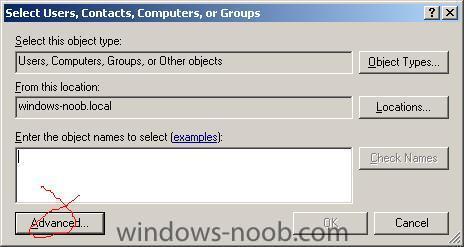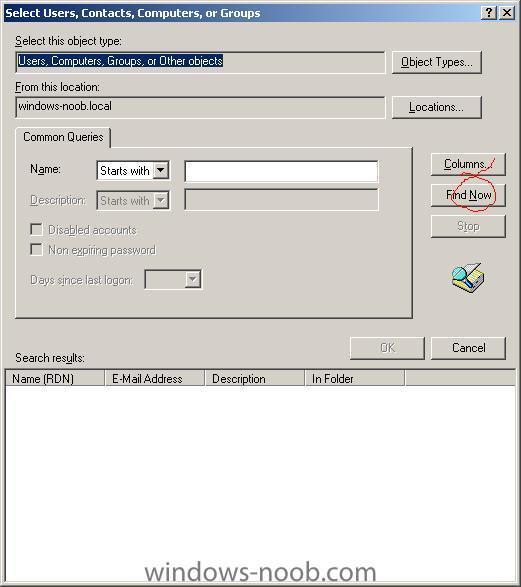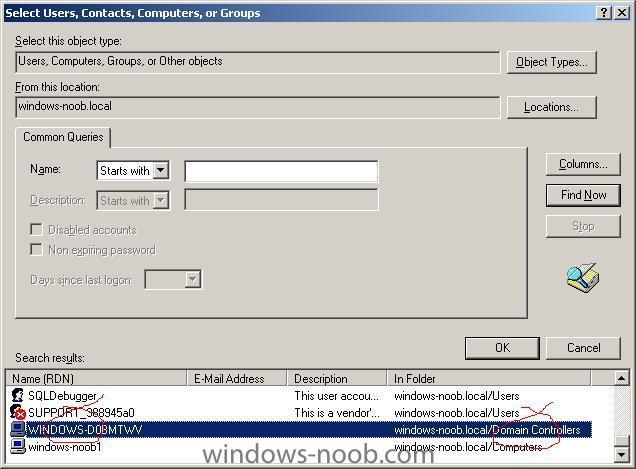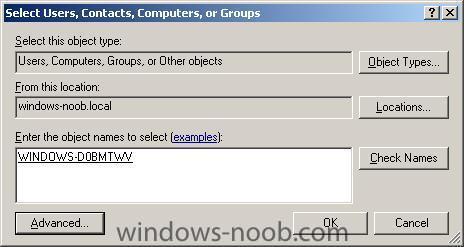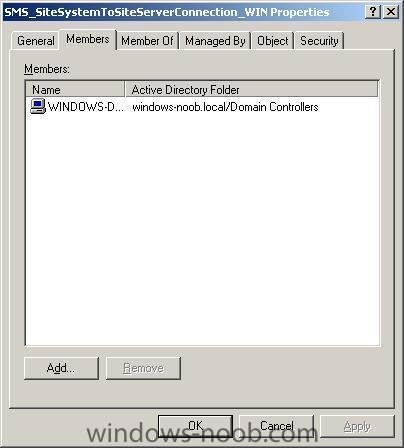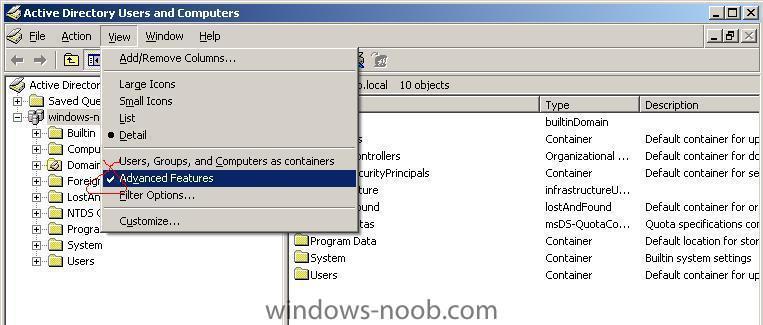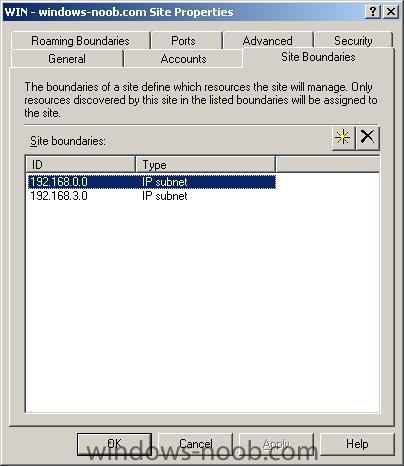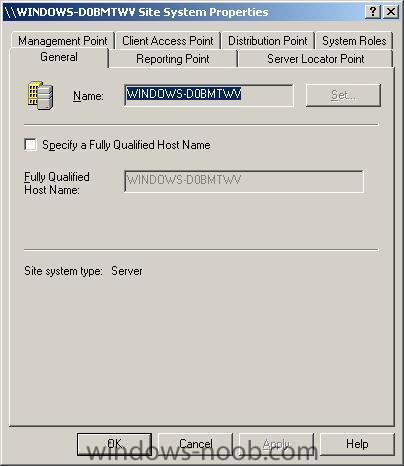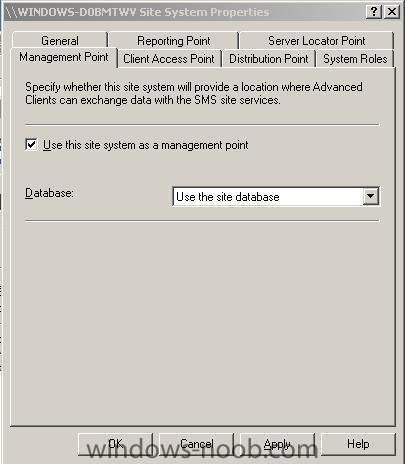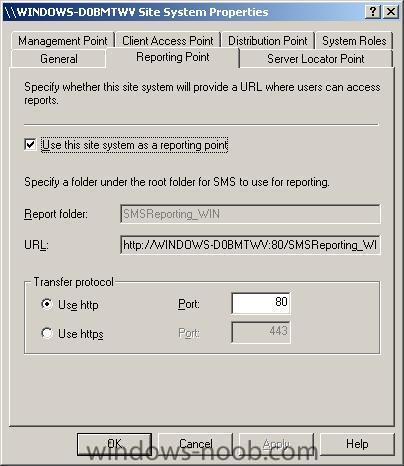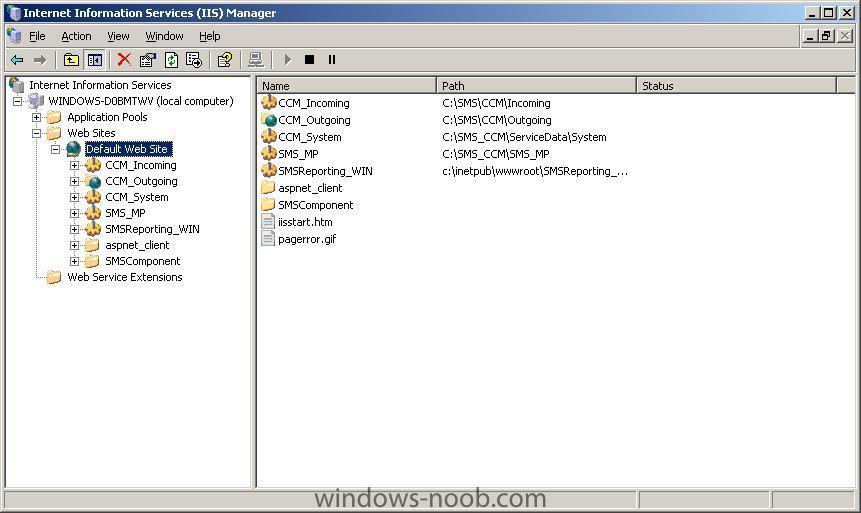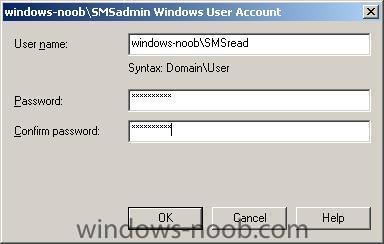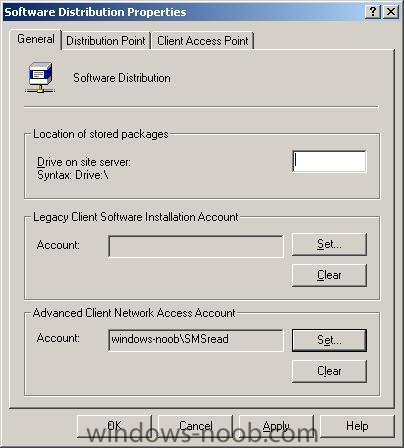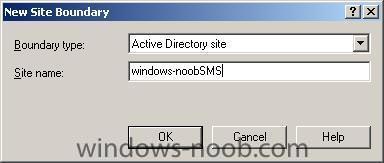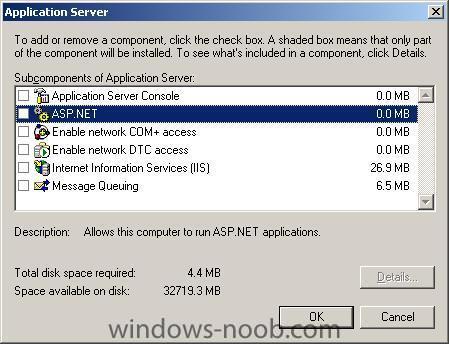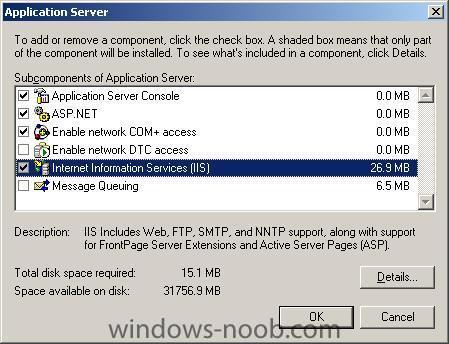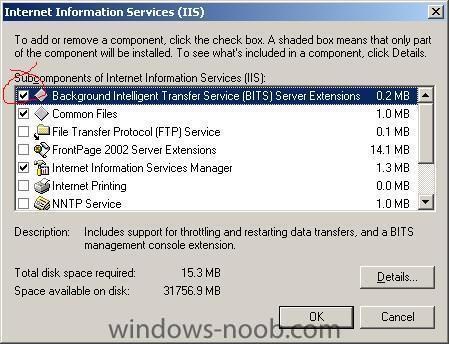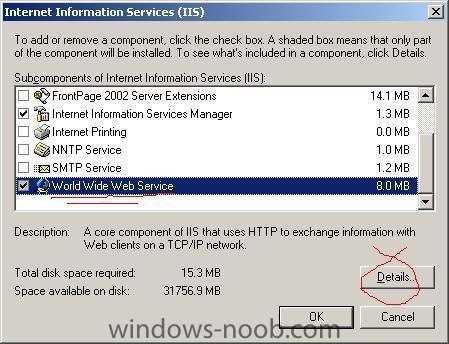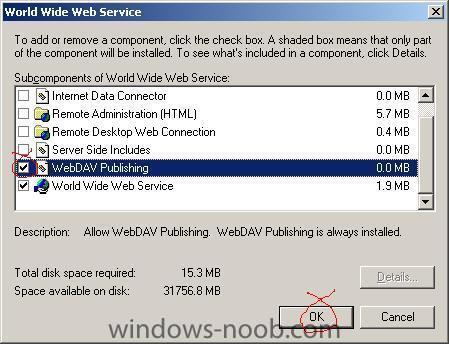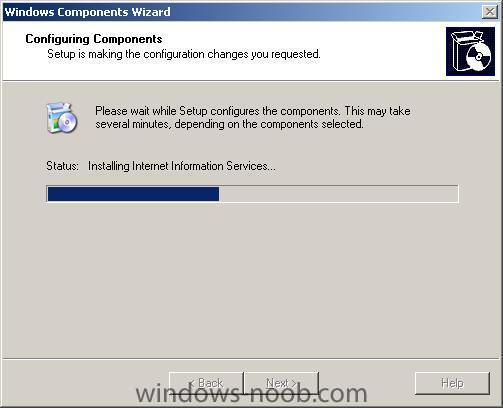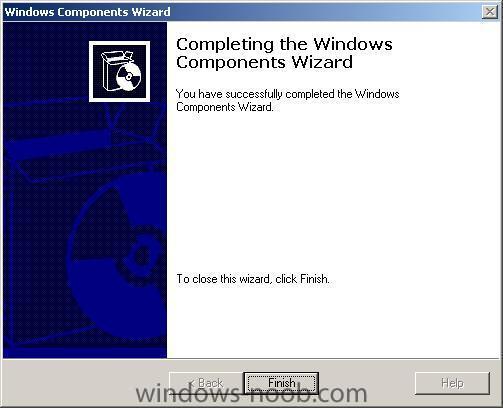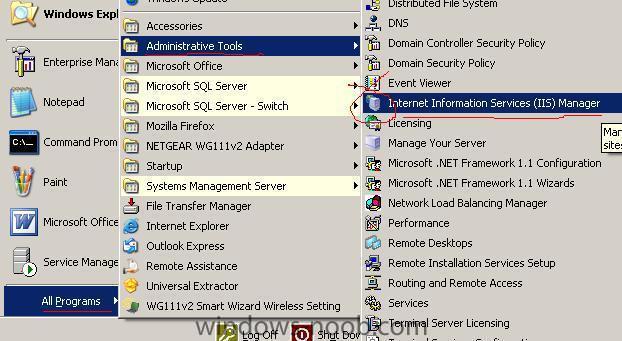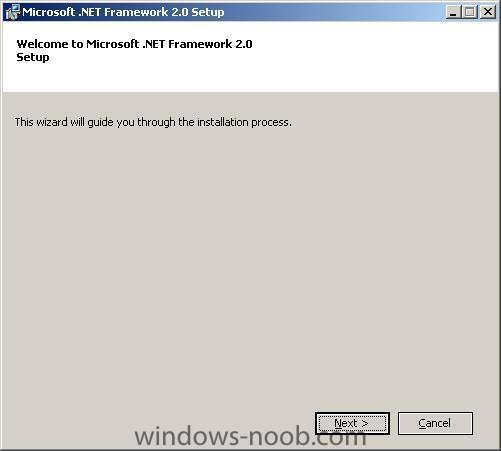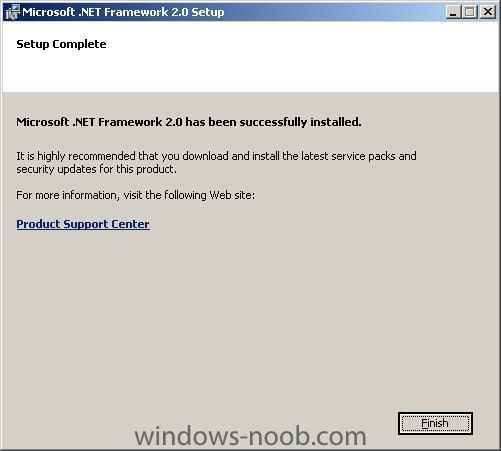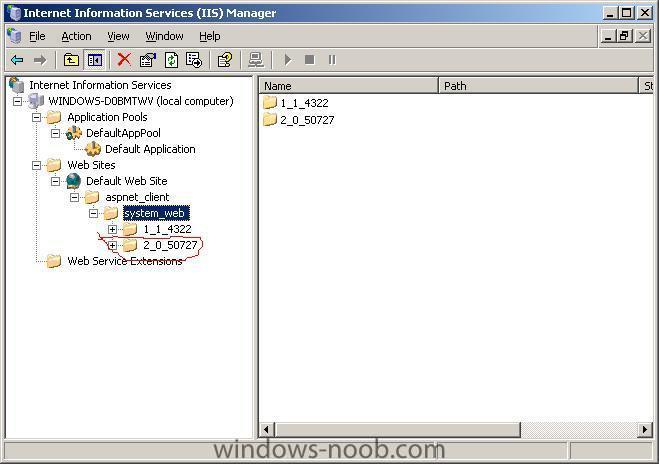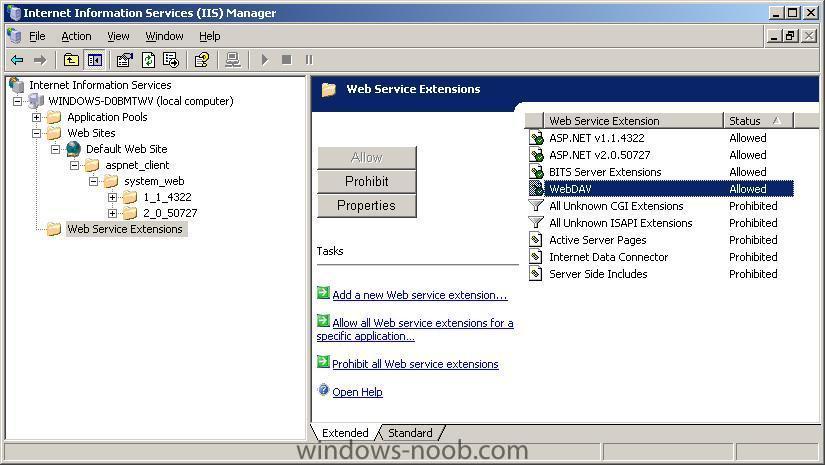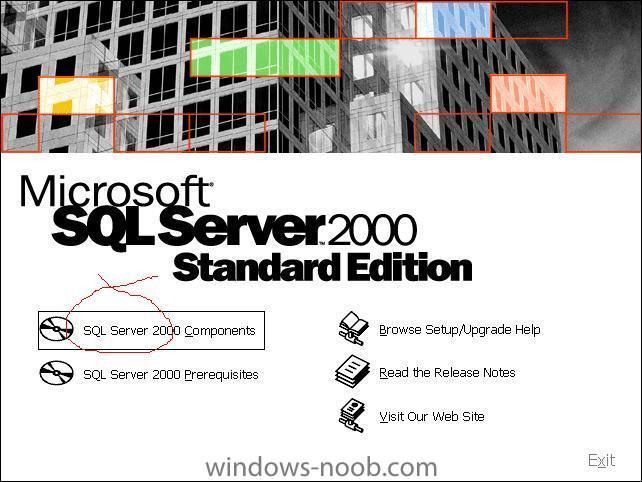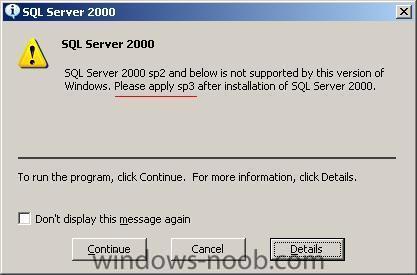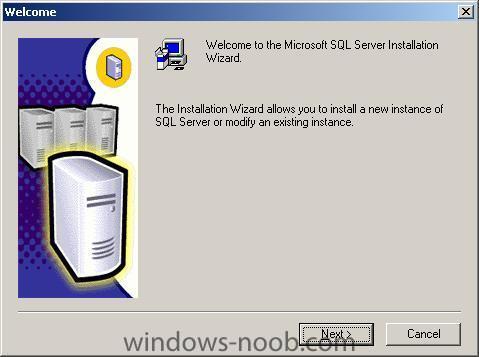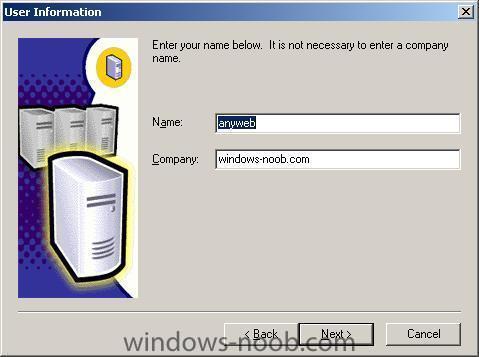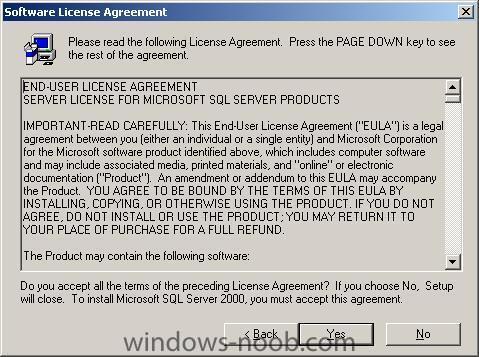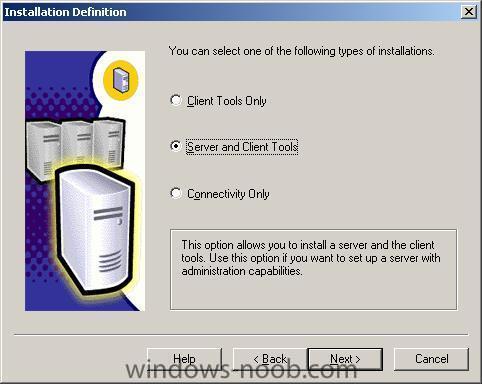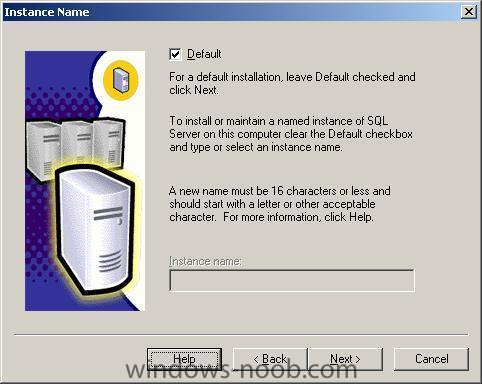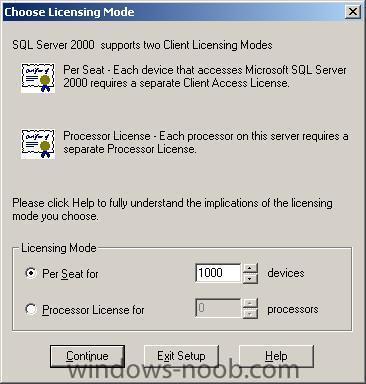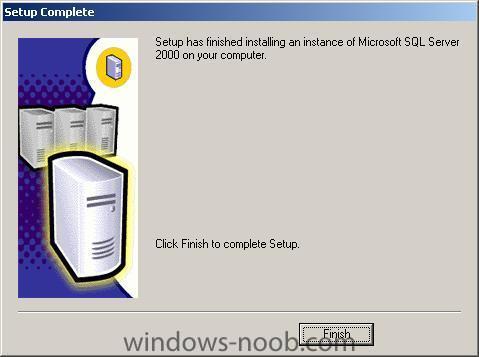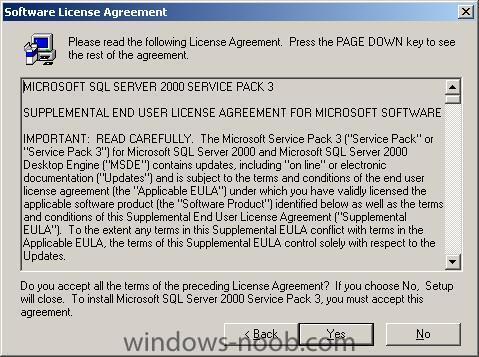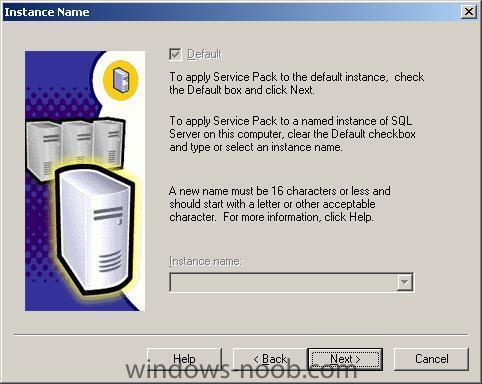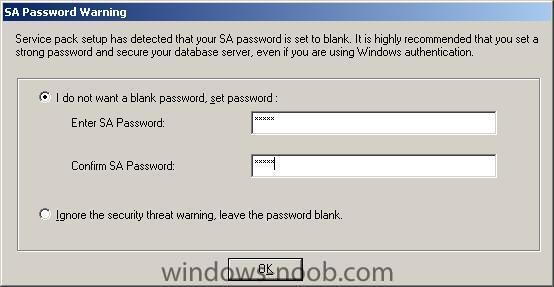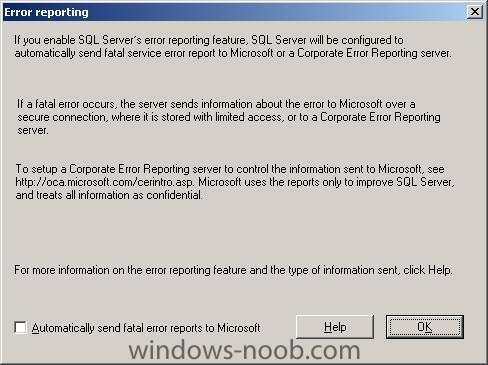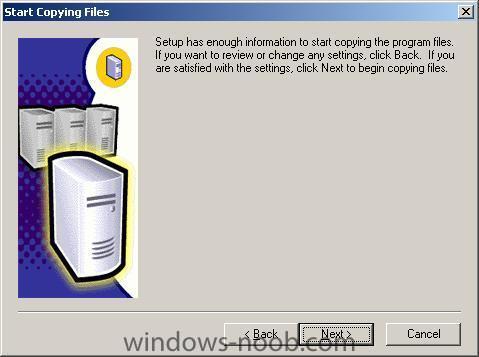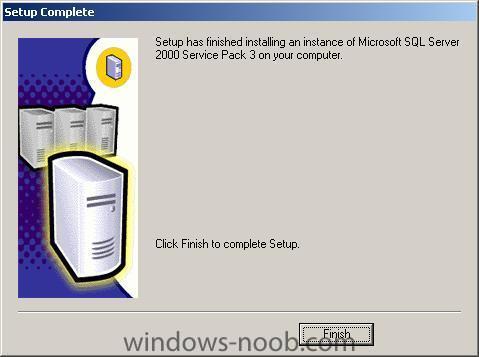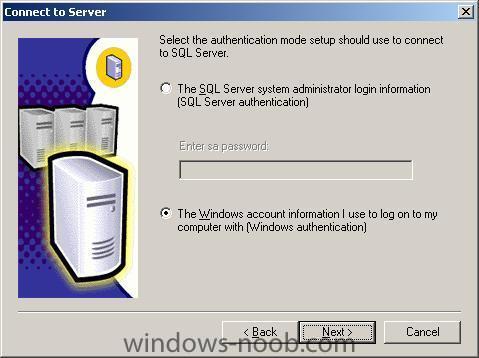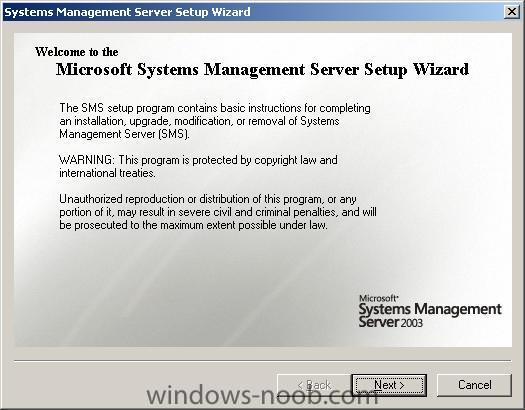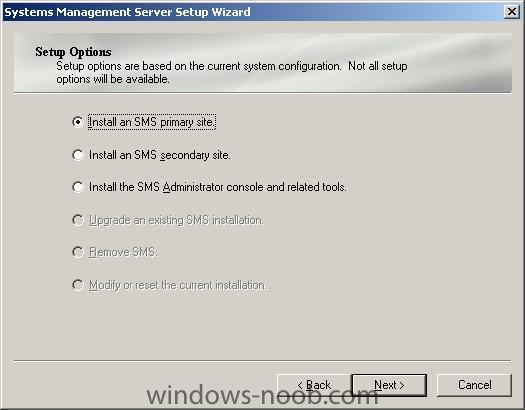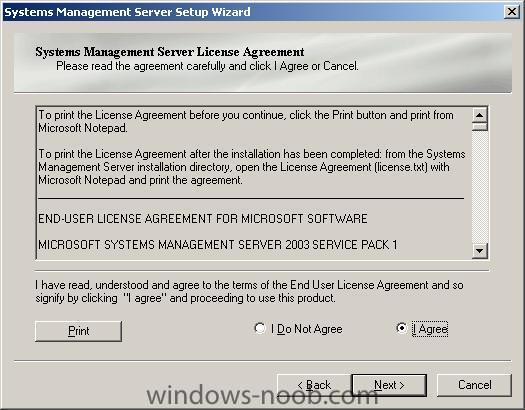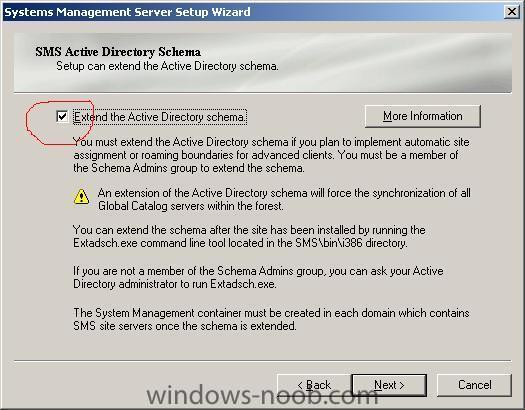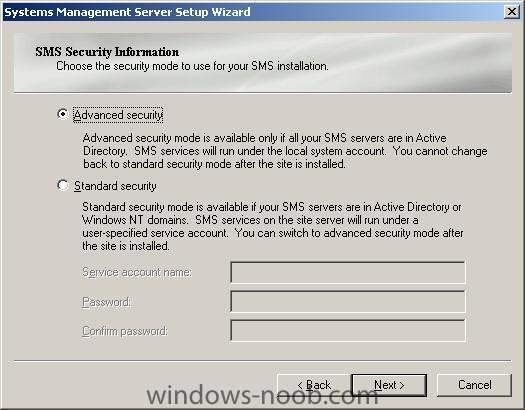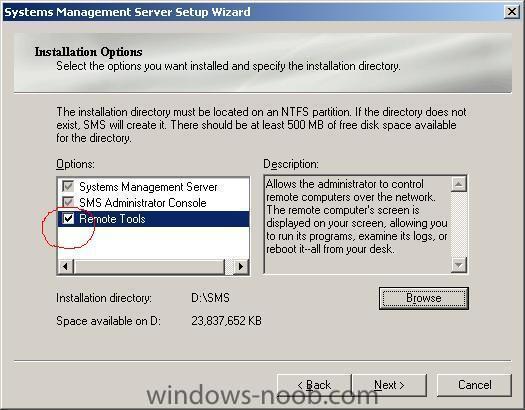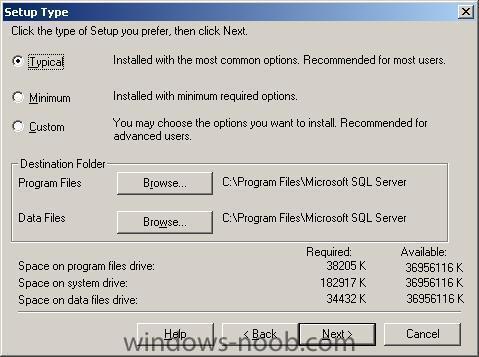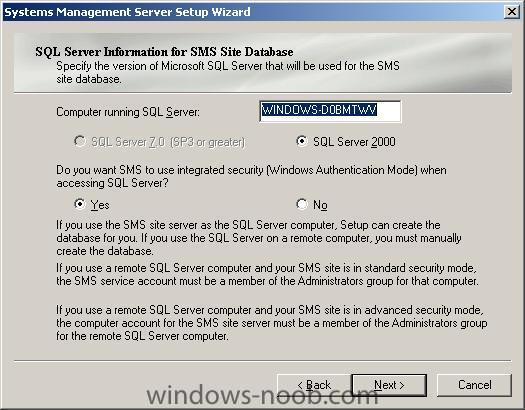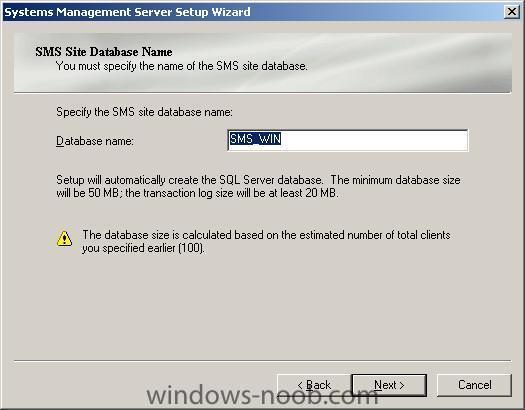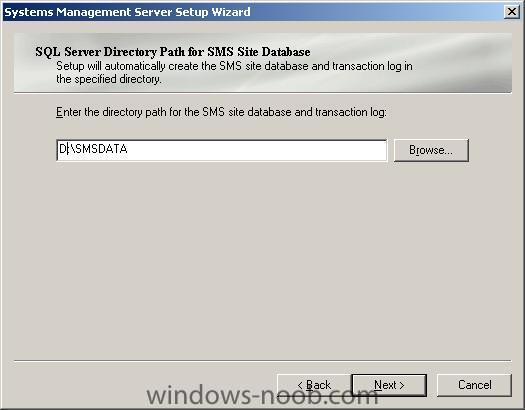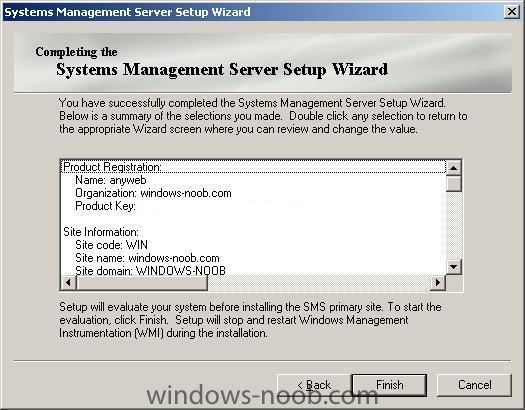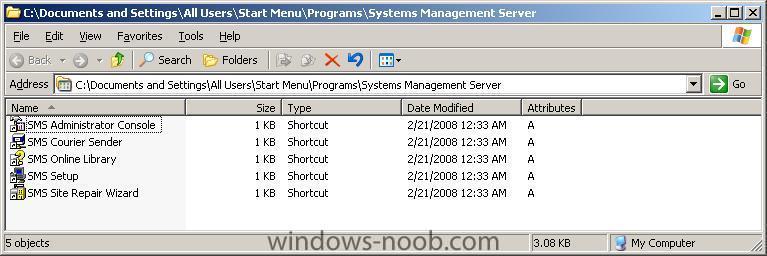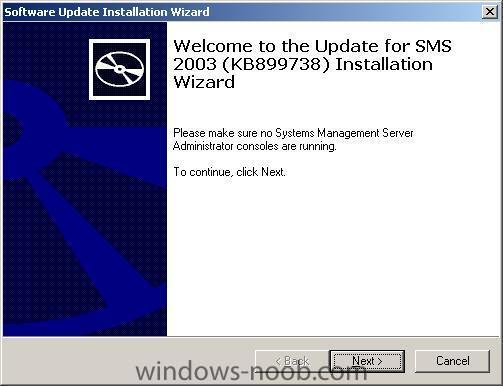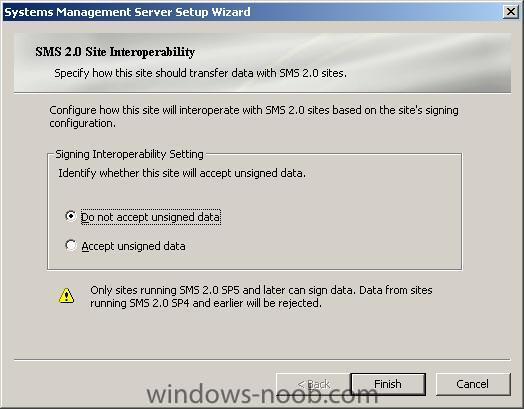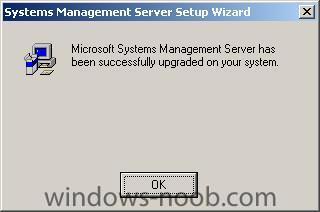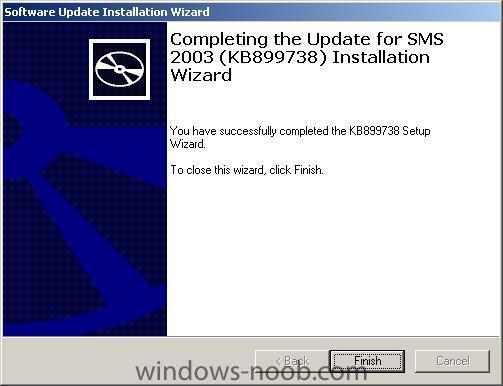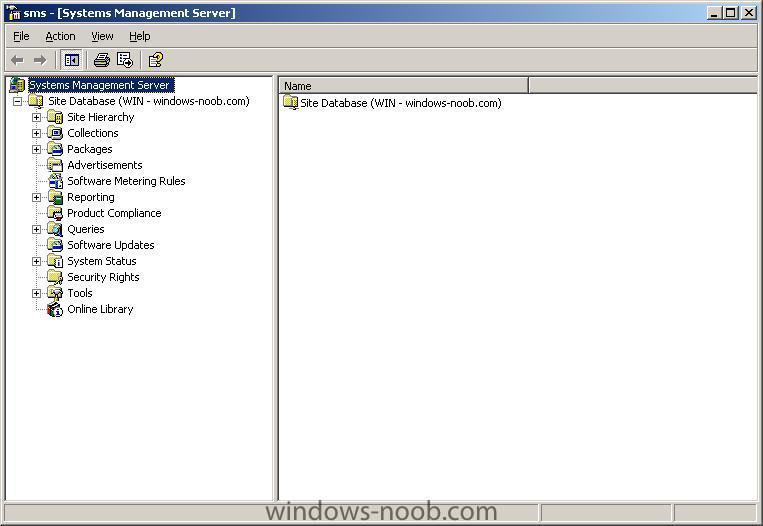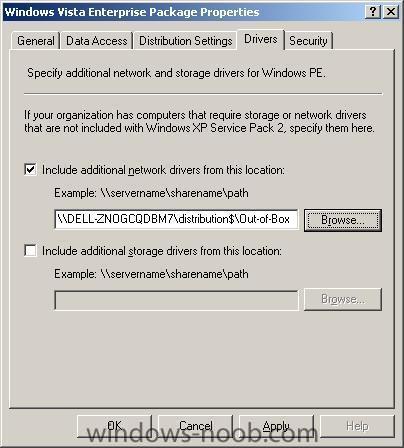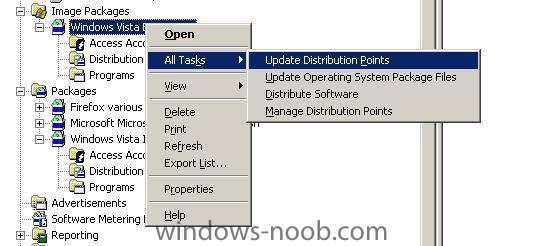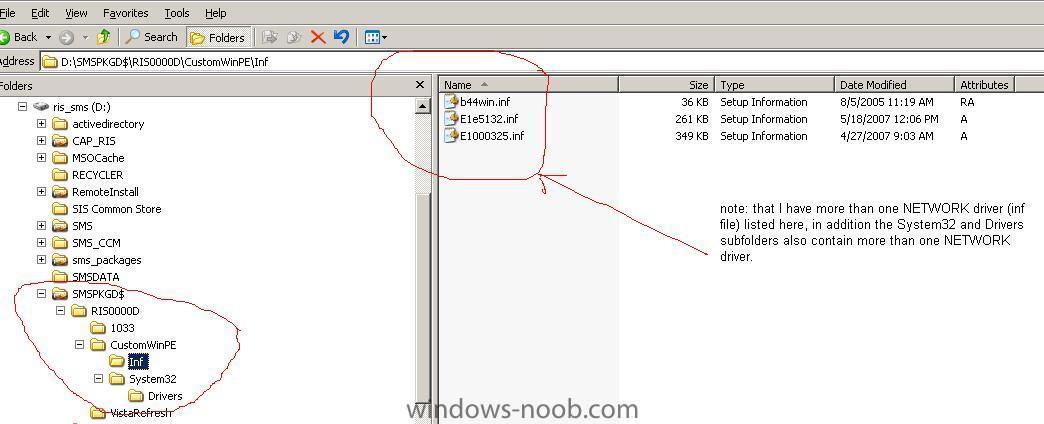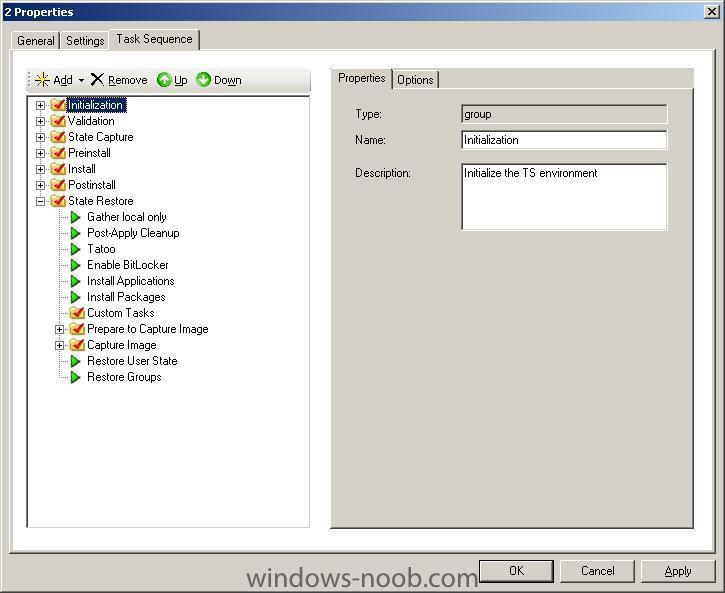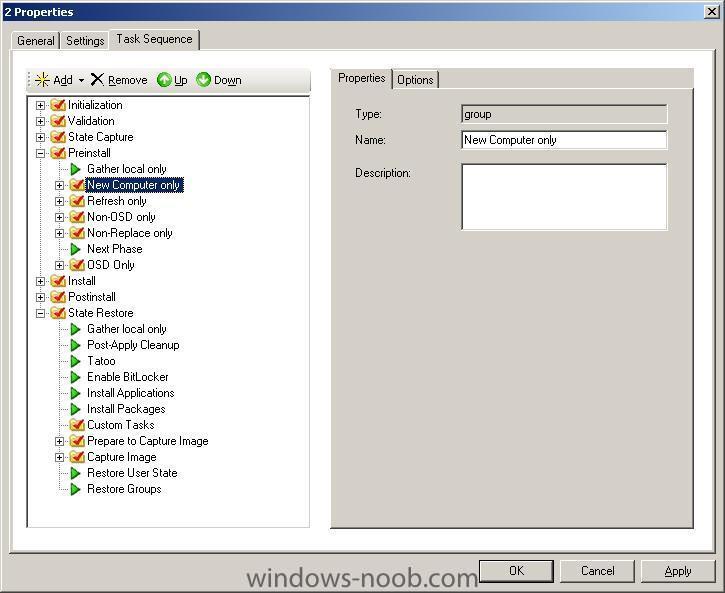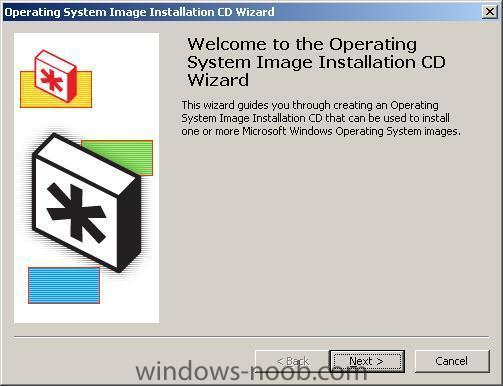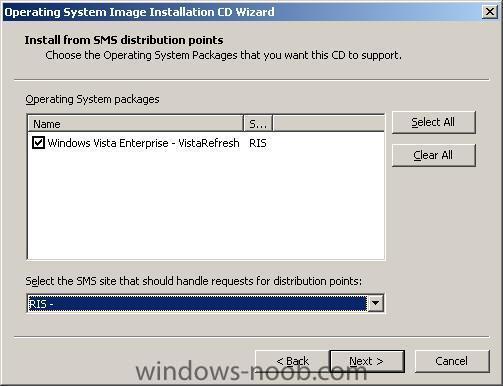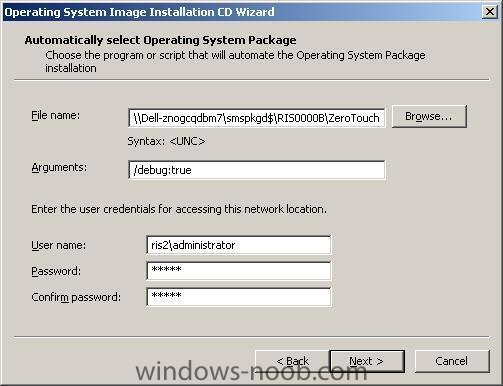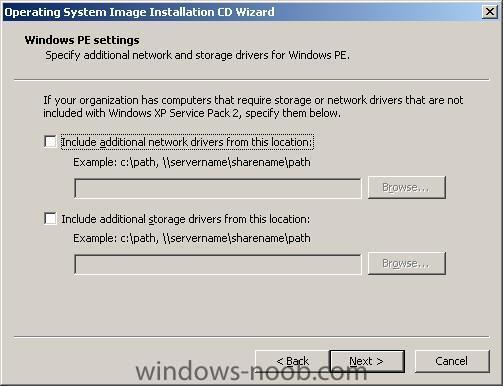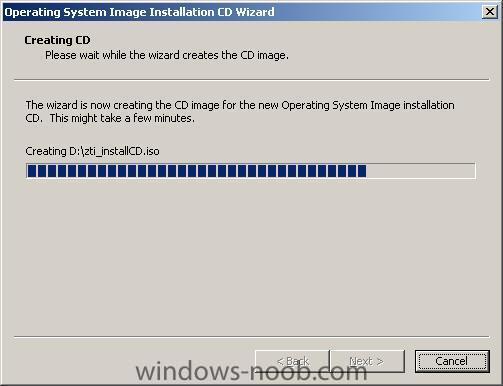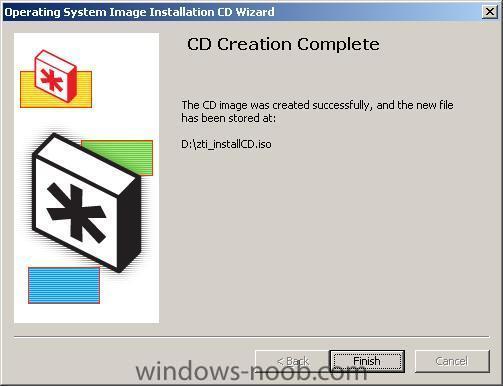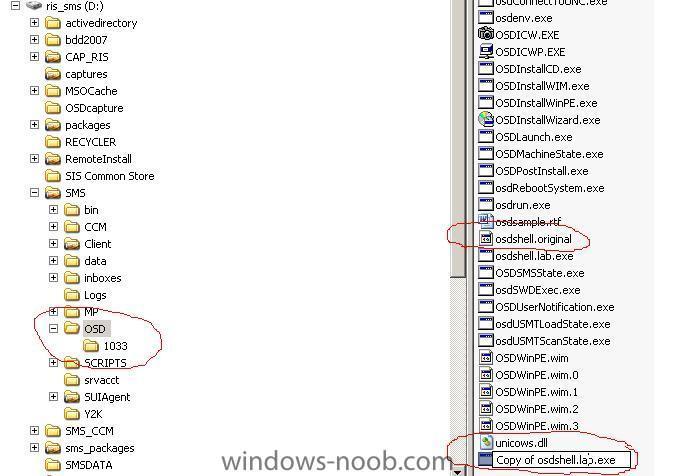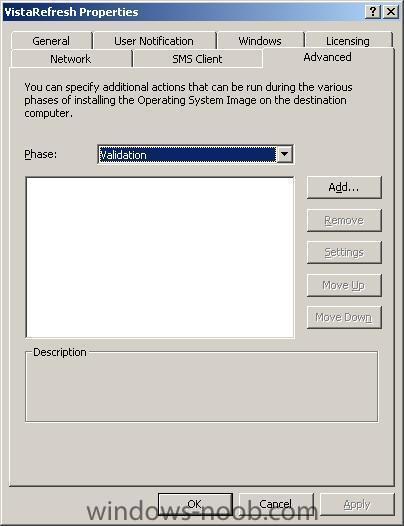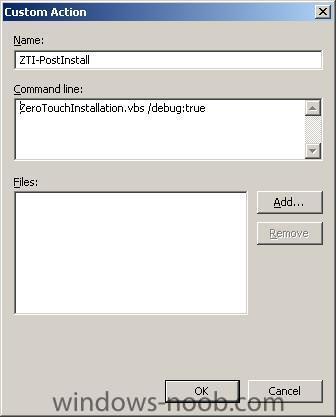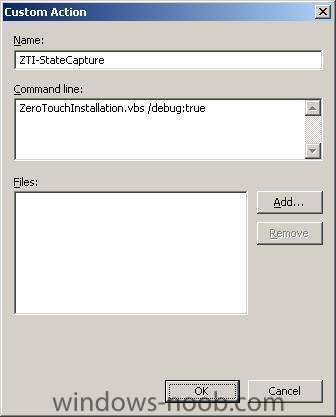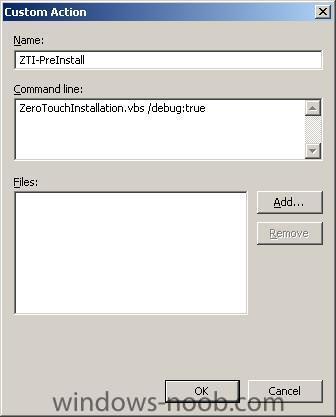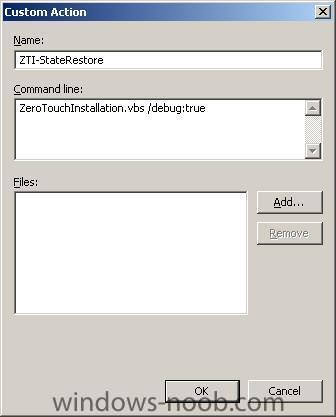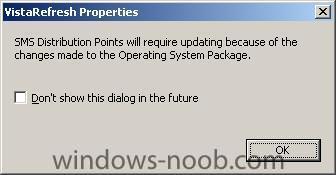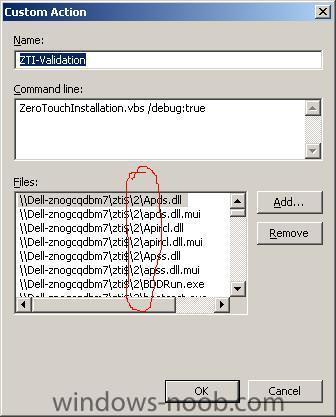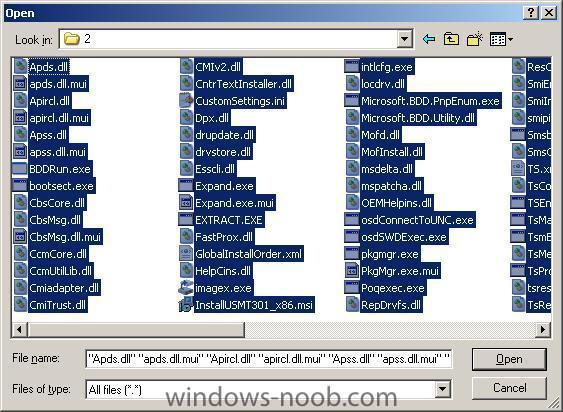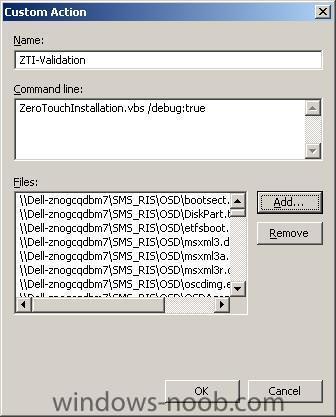-
Posts
9244 -
Joined
-
Last visited
-
Days Won
368
Everything posted by anyweb
-
This guide assumes that you have first installed and configured IIS and then installed SMS as outlined here. We need to open up active directory and add the computer account to the SMS groups. Click on Start/All Programs/Administrative tools/Active Directory Users and Computers. Click on View and make sure that Advanced Features is selected. select the Users option in the left pane and in the right pane scroll down until you see the SMS groups listed. The two groups we will add the computer account to are SMS_SiteSystemToSiteServerConnection_WIN and SMS_SiteSystemToSQLConnection_WIN. (note: the _WIN extension may be different on your sms server if you used a different SMS site code). Double click on SMS_SiteSystemToSiteServerConnection_WIN and click on the Members tab. click on Add in the window that appears click on object types select 'Computers' click ok and then click on Advanced click on Find now scroll down until you see your SMS server name (the domain controller you set the SMS server up on) and select it click ok and it should be listed similar to this click ok then apply to complete this action Now repeat the above actions for SMS_SiteSystemToSQLConnection_WIN When you have completed the above, we now need to startup the SMS Administrator console and to check the site boundries and verify the the sms server site name is configured for active directory instead of the IP address (as it is by default). Startup the SMS administrator console and click on the + beside Site Hierarchy to expand that section. Underneath that you'll have your SMS Site Server name (in my case WIN), and underneath that we have the Sites settings. Right click on the SMS Site Server name and choose Properties. click on the Site Boundries tab and you'll probably see one or more IP address's listed. Note: You'll need to know your AD site name. The AD site name is by default called Default-First-Site-Name and you can change that in Active Directory sites and services just as long as the site name is the SAME in both AD and SMS site boundries. Here we have renamed the Default-First-Site-Name to windows-noobSMS in Active directory sites and services back to SMS > click on the Yellow star button to add our site name and to tell SMS to look for it in AD. in the new site boundary window that pops up, click on the down arrow to reveal Active Directory and then fill in the AD site name. next we want to remove the one (or two or more) IP address's that SMS has listed here, to do so, highlight each one in turn and press the X. finally we should have our Active directory Sites and services plus SMS site boundries configured so it looks like this, click apply and ok to finish. Next we need to configure the Management Point (MP), Distribution Point (DP) and Client Access Point (CAP). To do this we will click on site systems and then right click on our server listed on the right choose properties and you'll see the SMS site properties Click on the Distribution Point tab and enable the following choices:- * Use this site system as a distribution point * Enable Background Intelligent Transfer Service (BITS) click on Apply and then select the CAP tab, and verify that it is enabled (it will be), and finally click on the MP tab and enable it. you will most likely see the following, answer yes. click on OK to continue. You may also wish to select the Reporting point option. At this point I popped into Active Directory Users and Computers and created two new users SMSadmin and SMSread, I made SMSadmin a domain admin and SMSread a user. and then back to SMS Administrator Console, Site Database, Site Hierarchy, Site Settings, Component configuration, software distribution. I then added SMSread as a user for the Advanced Client Network Access account Please reboot to complete this part of the process. Once you have rebooted you can start up IIS and you'll notice some new SMS areas are added... and once we start to add SMS packages we will see this area expand some more. Now that you have got this far you'll want to complete the SMS final configuration.
-
This guide assumes that you have installed Windows 2003 Server Sp1 (or later). Insert your Windows 2003 Server cd and click on Start/Control Panel/Add or Remove programs and then click on Add/Remove Windows components. Highlight Application Server by clicking on it, and then click on the Details button. this will bring the application server window up make sure the following items are selected: Application Server Console ASP.NET Enable network COM+ access Internet Information Services (IIS) when done click on Internet Information Services (IIS) to highlight it and then click on the details button, in the window that appears make sure to select the Background Intelligent Transfer Service (BITS) Server Extensions Then scroll down to World Wide Web Service and click on it to highlight it, then click on the details button make sure to select the WebDAV Publishing option and click on ok. click ok again, then ok, then next to start copying files from the cd. once done, click on Finish and that's it you are done. at this point you can start the IIS Manager (All Programs/Administrative tools/Internet Information Services (IIS) Manager as you can see here none of the SMS extensions are listed and also .NET v2 is also not installed. So let's download it and install it. Click here to download the Microsoft .NET Framework Version 2.0 Redistributable and once done, install it. accept the license aggreement to continue once .NET 2 is installed you can verify this by refreshing the IIS manager make sure your extensions are set to allow for the ones in the screenshot below:- ok now you are done you can now install SMS 2003 cheers anyweb
-
Microsoft SQL Server 2008, the next release of Microsoft SQL Server, provides a comprehensive data platform that is more secure, reliable, manageable and scalable for your mission critical applications, while enabling developers to create new applications that can store and consume any type of data on any device, and enabling all your users to make informed decisions with relevant insights. Download it here. via > http://blog.tiensivu.com/aaron/
-

how can I setup Zero Touch Installation ?
anyweb replied to anyweb's question in Zero Touch/ZTI, Lite Touch/LTi
i didn't use SQL server 2005 express in my example but here is a guide I put together for installing SMS 2003 sp2 This guide assumes that you have first installed and configured IIS and then installed SMS as outlined here. In addition, you should have configured SMS and you should have completed the final configuration and naturally your clients should have the SMS client installed (that should happen automatically if you followed parts 1-3 correctly). Finally to test your SMS 2003 installation you should test the deployment of an application like Firefox. SQL Express edition should be enough in a lab environment with a few machines. SQL Express edition does not support replication so if you develop an SMS structure with more than 1 site using SQL Express edition it will not work. cheers anyweb -
This guide assumes you have Windows 2003 Server Sp1 installed and configured, if you don't know how to do that you could follow this RIS installation guide, which while not specific to this guide is good enough to get a server setup and installed. Insert your SQL server 2000 standard edition cd (or download the ISO from MSDN) and mount it via daemon tools or similar, and click on SQL Server 2000 Components choose the first option which is to install a database server if you get a warning about the version of SQL you are using, make a note of what it says (we'll come back to that later) Click on continue and then next at the welcome wizard choose local computer as we are installing SQL server on this server... stick with the defaults and go with 'create a new instance of SQL server' edit the details if appropriate click yes to accept the license accept the default of server and client tools and click next next we get to choose the instance name of the SQL server, let's leave it as default and click next. when prompted for setup type, leave it as typical and click next enter the password for your administrator account as we are going to use the domain user account we leave the authentication mode as default and then we watch as it starts to copy files now you enter your licensing options..... in this example i chose 1000, you can click on help to find out more about your options. and then it goes off and installs SQL server after a while it's all done Install SP3 so now we have to install SP3 that it mentioned earlier.. so let's download it I chose sql2ksp3.exe from the list of 3 available options and once done, ran it, the file asked me where to install and i chose the default C:\sql2ksp3 once done, navigate to the folder and run setup.bat you should see the Service pack 3 wizard click next and yes to the license agreement accept the defaults and click next for the instance name which we setup earlier choose Windows Authentication on the next screen accept the default security optionand when prompted for SA Password warning enter a password select the upgrade microsoft search option and click continue choose your error reporting option and click ok to get things done. and then its ready to begin copying files for the sp3 upgrade you will eventually be informed that its time to backup your databases, but seeing as we didn't create any yet, there's no need. that's it, you've now installed SQL server 2000 and the required Service pack 3 a reboot at this point would be a nice idea to see your SQL server running in the system tray ;-) Service pack 4 is available so please download it and install it. cheers anyweb
-
This Guide assumes you are installing Microsoft SMS 2003 Sp1. This ISO is available for download on MSDN. As part of this guide we will upgrade SMS 2003 sp1 to SMS 2003 sp2. Optionally, Service pack 3 for Microsoft SMS 2003 is available online so you can install that after this installation (if you want). This guide also assumes that you are setting it up on a Windows 2003 Server (sp1 or later) and that you have installed SQL server 2000 or later. SQL 2005 is the recommended database solution today for SMS 2003 however for the purposes of this article only SQL server 2000 sp4 is covered. Microsoft recommends the following server requirements:- � Internet Information Services (IIS) must be installed and enabled as part of the Windows Server installation for certain SMS site system roles. � Microsoft SQL Server� 7.0 with Service Pack 4 or later, SQL Server 2000 with Service Pack 4 or later, Microsoft SQL Server 2005, Microsoft SQL Server 2005 SP1, or Microsoft SQL Server 2005 SP2 is required for the SMS site database system role. Warning:- If you have not installed and configured IIS then do NOT start the SMS installation. IIS must be setup and configured first. click on the SMS 2003 icon to start the installation Wizard. click next to continue and depending on your configuration click next again to see the installation options. Next we get to make a choice, let's stick with the default which is Install an SMS primary Site. next you may get to choose a custom (default) or express setup, stick with the default and click next. Next we are asked to accept the license agreement, and next we can input the registration details (I've removed my product key from the below screenshot) next we get to choose the Site Code, it's a 3 character code so make sure to write it down or remember it... In the example here I use WIN as the site code Now we get to decide if we shall extend the , make sure to enable this choice before clicking next as it allows us to implement automatic site assignment or roaming boundries for advanced clients. For security settings leave the default (advanced) the next choice is for the number of clients on your SMS site, enter a number which corresponds to that amount Next we get to choose where to install SMS, in the example here, I installed it on my D:\ partition (d:\sms), in addition I selected the remote tools option. NOTE: this is considered a security risk and wouldn't be recommended normally. next you are prompted for the SQL server information. Accept the defaults and click next. let SMS create the database... make a note of it's name enter a path for the transaction log, I changed mine from the default (C: to D:) if you have a lot of windows Admins, then consider changing this otherwise leave as default (SMS consoles) finally you'll see the completing the wizard screen clicking next will complete the installation (will take some time so go get yourself a coffee) and then you can click on finish to end the wizard. Ok once done, let's upgrade it to Sp2 by downloading this and installing it (also available on MSDN) agree to to sp2 license and then choose to not accept... after quite some time you have installed SMS 2003 Sp2. If you want to upgrade it to Sp3 then go ahead. I stayed at Sp2 because that was all i needed. at this point i decided to reboot. after the reboot you can startup the SMS administrator console and your SMS server should look like this congrats you are done ! Ok, now that you have installed SMS you will want to configure it. cheers niall
-

Step 2. Capture a Vista image (wim)
anyweb replied to anyweb's question in Zero Touch/ZTI, Lite Touch/LTi
have you followed the steps above exactly as i've described them ? do you have a sms server setup ? what network path did you type in to connect ? what permissions have you got on the share ? what user are you connecting as ?> -
Japan's Toshiba Corp (6502.T: Quote, Profile, Research) said on Tuesday it would stop promoting its HD DVD format for the next-generation DVD after losing the support of key studios and retailers to the Blu-ray technology backed by Sony Corp (6758.T: Quote, Profile, Research). full story > http://www.reuters.com/article/technologyN...B00294420080219
-

setup a windows 2003 RIS server in 3 easy steps
anyweb replied to anyweb's question in Remote Installation Services (RIS)
that part of the step is required for RIS, part of risetup involves copying the I386 files/folders from an operating system cd, in my example we use a windows XP service pack 2 cd (vlk) the vlk means it's a volume license key cd. finish the complete setup as described in the guide then make sure to reboot joining the domain should be easy as long as you know the domain name and administrator password... -
Jason Perlow takes a look at Microsoft's Hyper-V, and concludes: "Even though Hyper-V is still pre-1.0 code, I think Microsoft has done a bang-up job with its hypervisor, and it may just turn this Linux freak into a Windows 2008 junkie for running his own personal virtualization needs. While VMWare's ESX is still superior on a number of fronts, including its aforementioned VMotion technology and its more powerful cluster management tools, Microsoft has certainly sent a major warning shot across its bow and the bows of the respective Linux vendors, as well. via osnews.com more info > zdnet
-
you can get it here * Supported Operating Systems: Windows Server 2008; Windows Vista * Windows Vista * Windows Vista Service Pack 1 * Windows Server 2008 * Windows Server 2003 Service Pack 1 with KB926044 * Windows Server 2003 Service Pack 2 * Windows XP Service Pack 2 with KB926044 please note that the previous version is also available here
-

setup a windows 2003 RIS server in 3 easy steps
anyweb replied to anyweb's question in Remote Installation Services (RIS)
ok I've now added the updated version for Windows 2003 Server Service Pack 1 to the original post (first in this topic) -

setup a windows 2003 RIS server in 3 easy steps
anyweb replied to anyweb's question in Remote Installation Services (RIS)
i see the problem now, the document above is for Windows 2003 Server with no service pack installed, I have installed SP1 on a fresh install today and am currently updating the documentation to be Sp1 friendly, this will take some time so be patient cheers anyweb -

setup a windows 2003 RIS server in 3 easy steps
anyweb replied to anyweb's question in Remote Installation Services (RIS)
i'll install a new server and see what happens, so back laters.... -

setup a windows 2003 RIS server in 3 easy steps
anyweb replied to anyweb's question in Remote Installation Services (RIS)
please tell me at exactly which screenshot in the PDF are you getting the tcpip question ? -
full story > http://www.computerworld.com/action/articl...ticleId=9061841
-

Microsoft Slates Windows Server 2008 for February 2008 Launch
anyweb replied to anyweb's topic in Windows News
by the way, both the X86 and X64 DVD's are now available on msdn.com -
download these papers from here the link above allows you to choose from the following downloads: Deployment Guide for the Release Candidate Version of Windows Vista Service Pack 1 Enterprise Guidance for Application Compatibility Testing and Windows Vista SP1 Hotfixes and Security Updates included in Windows Vista Service Pack 1 Notable Changes in Windows Vista Service Pack 1 Release Candidate Overview of Windows Vista Service Pack 1 and they are all in Doc format.
-
Brief Description The Windows Automated Installation Kit (Windows AIK) is designed to help corporate IT professionals customize and deploy the Windows Vista and Windows Server 2008 family of operation systems. Overview The Windows Automated Installation Kit (Windows AIK) is designed to help corporate IT professionals customize and deploy the Windows Vista and Windows Server 2008 family of operation systems. By using Windows AIK, you can perform unattended Windows installations, capture Windows images with ImageX, and create Windows PE images. This update is provided to you and licensed under the Windows Vista License Terms. Top of page System Requirements * Supported Operating Systems: Windows Server 2008; Windows Vista * Windows Vista * Windows Vista Service Pack 1 * Windwos Server 2008 * Windows Server 2003 Service Pack 1 with KB926044 * Windows Server 2003 Service Pack 2 * Windows XP Service Pack 2 with KB926044 from Microsoft.com
-
I got this error when trying to do a ZTI install of Vista on a modern Intel ICH9 dekstop with the Intel gigabit nic (vpro Network:Intel 825xx Gigabit Platform LAN Network Device Driver). SMS Operating System Deployment It turns out that when I created the OS package in SMS, I didn't bother specifying any special network drivers, and thus, Windows PE couldnt communicate over the network to this computer. to resolve this I first added the NIC (network) drivers to my deployment point in Deployment Workbench by clicking on Distribution share in the left pane and then selecting Out-Of-Box Drivers. I right clicked here, and selected New, and then used the wizard to point to the local path of the Intel Gigabit XP drivers. Once done I right clicked on my Deployment point and chose Update. I then went back into SMS, clicked on Image Packages, then selected my vista image (Windows Vista Enterprise), right clicked on it and chose properties. I then clicked on the Drivers tab and entered the \\servername\sharename\path path to my newly added network drivers on the Distribution$ share. I then clicked ok and it copied the files over, once done it informed me that the SMS distribuition points required updating, so I did that. once done your Windows Vista ZTI package will have a new folder added to it called CustomWinPE eg:- D:\SMSPKGD$\RIS0000D\CustomWinPE obviously in this example, SMSPKGD$ is an SMS sharing directory and RIS0000D is the Package ID of the package within that share. If you browse the CustomWinPE folder, you will see there are INF and System32 subfolders which contain the network drivers you just added. Please note that the above works nicely if you are adding only ONE new network driver, if you are adding more than one then it's a good idea to copy the contents of the newly created CustomWinPE folder to somewhere else, and manually copy in the CAT/SYS/INF and EXE files as appropriate (easy to figure out), then once done, copy the contents of that back to the original SMS package share as in the screenshot. In addition, once you have made the changes you will need to either completely re-deploy an os (eg: XP) on the client computer, and then rerun the ZTI advertisement to the client, OR you can manually boot the system using a WindowsPE usb key/cd and copy over the contents of the files within CustomWinPE to the c:\MININT folder (eg: all files in INF must be copied to C:\MININT\INF and so on), then once done, power down, and reboot and the ZTI process will continue correctly without the original error for some more info on the subject read here > http://www.windowsitsecurity.com/Article/A...7539/47539.html cheers anyweb
-
linked via >http://www.msfn.org/comments.php?shownews=21834 full story > computerworld
-

how can I change the computername in Zero Touch
anyweb posted a question in Zero Touch/ZTI, Lite Touch/LTi
If you carry out a Zero Touch installation (as outlined here) the computername will remain the same as it was when you captured the original Vista image. One way to change the computername is via a script, to add this script to the Zero Touch installation, we need to start up Deployment Workbench and click on the Builds option in the left pane. Right click on our Zero Touch build and choose properties, then choose Task Sequence in the available tabs. Within the task sequencer tree, click on the + beside the Preinstall section to expand it, and then expand the New Computer Only option after that. Now click on Add, and from the drop down menu select Task. In the command line of the New Task paste in the following line cscript.exe "%SCRIPTROOT%\RequestComputerName.vbs" The actual contents of that script are located here Once done, rename the task to RequestComputerName and using the UP arrow in the Task Sequencer move the task up in the list so that it is the first command run. This means that the script will only run if the machine is detected to be a new computer with no operating system installed. -
Step 18 This guide assumes that you have first completed the following 17 steps in the order listed below. Create an OSD capture CD and then captured a Vista image (wim). Next you should have imported that captured Vista image into BDD, and then updated BDD with your Windows PE and XP OS files. You should then have created a new build in BDD for the captured WIM image. You should then have created and updated the BDD Deployment point (OSD/ZTI) and then updated Windows PE to support WMI. In addition, you must have imported the captured Vista WIM file into SMS and then created an OS Deploy Program. Update the SMS distribution points and then Copy driver resources for SMS packaging. Next you need to create a package in SMS from the drivers resources, and add the driver resources to a SMS distribution point and then Update the SMS distribution point. Edit the customsettings.ini and bootstrap.ini files. Update each OSD phase with BDD ZTI scripts and files. Copy osdshell.lab.exe to osdshell.exe. In the SMS administrator console, select Image packages in the left pane, and right click it, choose all tasks and select Create Operating System Image Installation CD. This will start the Operating System Image Installation CD Wizard. When you get the installation settings screen, you might want to remove the tick box from Allow installation of Operating System Packages from a location provided by the local computer installer and Allow the local computer installer to choose the name of the new computer. In addition, please select automatically choose the operating system package to install by running a custom program or script Then select the OS package (Windows Vista Enterprise) that you want the CD to support followed by the script location/name from your SMS package ID folder using the ZeroTouchInstallation.vbs script with the /debug:true switch (helpful for logs)] Next we have the option to add drivers to the cd for Network and Storage (raid/sata/etc) then we give the CD a name and this will create an ISO file for us to burn CD's from. when it's done we can burn the ISO to a CD and use it to boot bare metal machines to carry out Zero Touch installations. And that's it, congratulations if you got this far, you have now completed my 18 Step Zero Touch Guide. If it didn't work as expected then I'd advise you to check and re-check everything from start to finish, particularly Step 16. If you have any questions then please post them in the Zero Touch forums @ windows-noob.com cheers anyweb If you found this guide useful then please Digg it.
-

Step 17. Copy osdshell.lab.exe to osdshell.exe
anyweb posted a question in Zero Touch/ZTI, Lite Touch/LTi
Step 17 This guide assumes that you have first completed the following 16 steps in the order listed below. Create an OSD capture CD and then captured a Vista image (wim). Next you should have imported that captured Vista image into BDD, and then updated BDD with your Windows PE and XP OS files. You should then have created a new build in BDD for the captured WIM image. You should then have created and updated the BDD Deployment point (OSD/ZTI) and then updated Windows PE to support WMI. In addition, you must have imported the captured Vista WIM file into SMS and then created an OS Deploy Program. Update the SMS distribution points and then Copy driver resources for SMS packaging. Next you need to create a package in SMS from the drivers resources, and add the driver resources to a SMS distribution point and then Update the SMS distribution point. Edit the customsettings.ini and bootstrap.ini files. Update each OSD phase with BDD ZTI scripts and files. Locate your SMS OSD installation folder, and in there we'll find two files osdshell.exe and osdshell.lab.exe. We'll rename osdshell.exe to osdshell.original and take a copy of the osdshell.lab.exe and rename that to osdshell.exe This osdshell.exe will give us the option of pressing F8 in the development environment to give us an extra command prompt which helps in troubleshooting. If you found this guide useful then please Digg it. -
Step 16 This guide assumes that you have first completed the following 15 steps in the order listed below. Create an OSD capture CD and then captured a Vista image (wim). Next you should have imported that captured Vista image into BDD, and then updated BDD with your Windows PE and XP OS files. You should then have created a new build in BDD for the captured WIM image. You should then have created and updated the BDD Deployment point (OSD/ZTI) and then updated Windows PE to support WMI. In addition, you must have imported the captured Vista WIM file into SMS and then created an OS Deploy Program. Update the SMS distribution points and then Copy driver resources for SMS packaging. Next you need to create a package in SMS from the drivers resources, and add the driver resources to a SMS distribution point and then Update the SMS distribution point. Edit the customsettings.ini and bootstrap.ini files. Define BDD ZTI actions. Open the SMS administrator console, select Image Packages, expand it, and highlight Windows Vista Enterprise. In the results pane, double click on Programs you should now see VistaRefresh listed. Right-click on VistaRefresh and choose properties then click on advanced. Ensure that Validation is selected in the Phase dropdown and click Add. Ensure that (Custom) is selected and click OK. Type the following custom action values: Name: ZTI-Validation Command line: ZeroTouchInstallation.vbs /debug:true Click Add and in the Files of type dropdown, select All files (*.*). In the File name box, type \\Servername\ZTI$ and click Open, click in the list box and navigate to the build you've created in BDD 2007 (in our example it was build 2), once done press Ctrl+A to select all files. Click Open. In the screenshots here, the circled '2' is the build ID number in our ZTI share, the build ID number is found in our BDD 2007 workbench under the builds listed. Click Add again, in the File name box, type \\Servername\SMS_site\OSD and click Open (replace servername with your servername and replace SMS_site with the share name of your default SMS folder). Press Ctrl_a and add all files in that folder. For the remaining Zero Touch phases, we do NOT have to mark and copy the files above, all we have to do is add the VBS script State Capture Preinstall Postinstall State Restore so for example for PostInstall click Add, choose (Custom), enter ZTI-PostInstall as the name and paste the script in the command line ZeroTouchInstallation.vbs /debug:true repeat this action (changing the name obviously) for the remaining states:- State Capture Preinstall and State Restore To finish this step, click Apply and then Ok, a notice will tell us that we have to update the SMS distribution points. Updating the SMS distribution Points. Right click our Windows Vista Enterprise package, and choose All Tasks, select Update Distribution Points and then click yes to the notice. If you found this guide useful then please Digg it.




